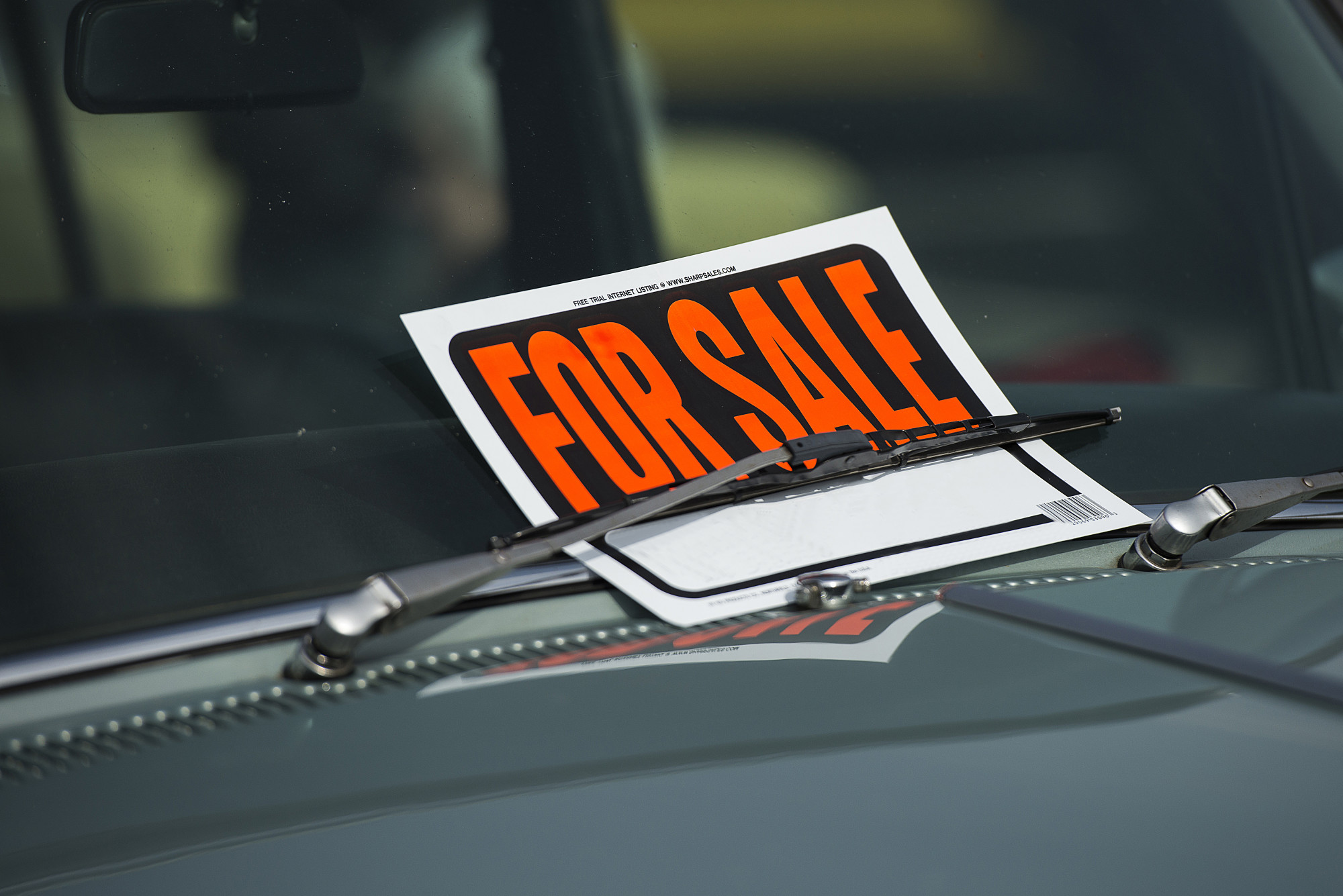

The Complete Guide to Selling a Used Car in Dallas
Did you know that used cars sell for an average price of $27,633 as of January of this year? Whether you’re looking to get a new ride or just make some extra money, selling a used car can be a great way to make that happen. But how do you go about selling your car in Dallas, Texas?
Selling a used car takes some careful research, preparation, and planning. Read on to learn more about this process and discover how to get the best profit from your used car.
Assess Your Car
When you’re getting ready to sell your used car, the first thing you need to do is to take a long, hard look at it. Although you’ll be checking its official value later on, there are also some factors that can impact how much someone is willing to pay for it. These issues might need to get addressed before you get your car officially appraised.
Of course, dings, dents, and scratches in the paint can drop the value of your car just as much as something like a bad tint job. But if you smoke in your car or if half of the floor mats are missing, that could also impact the price. Look over your car while keeping an eye out for these more subjective issues and decide if you want to fix them before you sell.
Check Your Car’s Online Value
After you’ve given your car a good once-over, it will be time to start checking its market value. This will help you set your price if you’re selling privately or negotiate a fair car price if you’re working through a dealer. There are several online resources you can use to determine the estimated value of your car.
Websites like Kelley Blue Book, Edmunds, and Cars.com can give you detailed estimates of your car’s value. You’ll need to input the basic information about your vehicle, including its make and model, year, mileage, and so on. You’ll also need to let them know about any damage, mechanical problems, and other issues.
Get It Appraised
If you’re not getting consistent answers about the value of your car or you want a rock-solid valuation, you might consider getting it appraised. During a professional appraisal, a mechanic or appraiser will take a look at the car and determine its fair market value. Like the websites we mentioned, they’ll consider the make, model, year, mileage, overall condition, and more.
Getting a professional appraisal may be a good idea if you’re selling an especially rare or expensive car. For instance, if you have a classic hotrod, it may be worth far more than other cars of its year and mileage – especially if it’s a rare model. This can also be a good idea if you’re selling a newer high-end car, such as a Tesla or a Corvette.
Run an Emissions Test
Cars in Dallas County are required to undergo an emissions test every year in addition to the annual safety inspection. Even if your emissions test is up to date when you decide to sell your car, it may be a good idea to get another test run. Some buyers may want an up-to-date analysis of how much smog the car puts out before they buy.
Of course, if your emissions and/or safety tests are out of date, you’ll have to get those taken care of before you list the car. Your registration and insurance will also need to be paid in full if they aren’t already. Make sure your car is up to date on all fees and service before you take it to be appraised or list it.
Gather Your Paperwork
Once you know how much to sell your car for and your emissions test is done, it will be time to start gathering your paperwork for the car you want to sell. You’ll need a few different documents to transfer ownership of your car to your buyer. Having these on hand can make your sale process easier.
First of all, you’ll need the official car title that you received when you first purchased the car. If you lost your title then you can request a replacement copy by mail from the Texas Department of Motor Vehicles, Wichita Falls Regional Office, or in-person from the Fort Worth and Carrollton offices. You’ll also need proof of current insurance and your current inspection records.
Collect Your Service Records
In addition to the official documentation on your car, it’s also a good idea to get together your service records for the car. Your service records show what kind of work has been done on the car in the past. This can show potential used car buyers that you’ve maintained the car well and that any major issues have been dealt with.
If you have records of routine maintenance, such as oil changes and tire rotations, it’s a good idea to go ahead and round those up. You may also want to gather receipts for any major work you’ve done, including replacing brakes, repairing the transmission, swapping out spark plugs, replacing broken axels or motor mounts, and so on. This can raise the price of the car since the buyer can trust that they won’t have to deal with those expensive issues anytime soon.
Empty Your Car
With all your paperwork together, it will be time to start prepping your car itself for sale. The first step will be to clean out all your personal belongings from the car. Over time, things can make their way into all sorts of nooks and crannies, so you want to be sure you do a careful once-over to get all your things out.
Start by clearing anything out of the floorboards, center console, seatback pockets, and glove box. Next, check the trunk and any additional cubbies you may have around the car, including door pockets and under-floor storage. Finally, be sure you remove any steering wheel covers, seat covers, rearview mirror decorations, scent clips, and so on.
Clean Your Car
Once everything is out of your car, you’ll need to give it a thorough cleaning to prepare it for sale. Cars that are spic and span tend to get a higher price than cars with dirty floorboards and dusty dashboards. You may even want to consider getting your car detailed to get that next-level shine and polish.
If you’re cleaning your car yourself, start by scrubbing down the outside, including getting dead bugs off the front bumper, cleaning the windshield, and washing the wheels. Next, vacuum out the inside, dust the dashboard and control panels, wipe down the doors and center console, and clean out the air vents and cup holders. Don’t forget to clean the inside of the windows and windshields, and consider shampooing seats and carpets that are extra-dirty or stained.
Take Pictures
Now that your car is clean and looking good, it’s time to take it to the runway. Having many good pictures of your car can be critical when you’re drawing in potential buyers. Buyers will want to see what sort of shape the car is in, inside and out, and pictures can be the best way to communicate that.
Start by taking pictures of the outside of your car from each side, showing the full length and height of the car, as well as the front and back. Inside, take pictures of the front seat, the dashboard, the back seat, and the odometer reading. You should also take pictures of the trunk, bed, or cargo space, including any in-floor storage the car has.
Talk to a Dealer
If you decide to sell your used car through a dealer, your next step will be to find a dealer you trust. If you plan to buy a new vehicle, you may want to talk to your dealership about how much you could get in trade-in value on your current car. If you aren’t buying new, you may prefer to look into dealers who work exclusively with used cars.
Decide before you go to the dealership how much you ideally want to get for your car and what the lowest price you’re willing to sell it for is. Don’t be afraid to shop around with a few different dealers to get the best price for your car.
List Online
If you decide to list your car online, there are many options available to sell your car. Craigslist is a very popular option for selling cars quickly, and Facebook Marketplace is growing in popularity and traffic. You may also prefer to list your car through dedicated vehicle marketplaces such as Cars.com, AutoTrader, and CarGurus.com.
Post all the pictures you took of your car, along with a brief description of the vehicle. Be sure to include the make, model, year, color, and mileage in your description as well as the overall condition of the vehicle. You may also want to include the VIN, any special features of the car, and a brief history of accidents and repairs.
Advertise on Social Media
Once you’ve got your car listed, your work is far from over. The internet is a big place, and you’ll need to do some legwork to make sure your car ad gets seen by as many potential buyers as possible. Social media can be a fantastic way to get the word out and draw in more potential buyers.
Start by creating a post on your personal social media letting everyone know you’re selling a car. If you have the car listed online, be sure to include a link to the listing so people who are interested can see all the details. You may also consider running ads to reach potential buyers in your area who may want to take a look at your car.
Talk to Friends and Family
In addition to advertising cars for sale on social media, word of mouth can be a fantastic way to get more traffic for your car listing. When you get ready to list your car, let your friends and family know you’re planning to sell it. If someone you know is in the market for a car, you may even be able to avoid the whole listing process altogether!
When you’re letting friends and family know about your car listing, be sure they can find the details about the listing, too. If they’re friends with you on social media, let them know where they can find the listing link. If not, send the link in a text or email so they can pass it along to anyone they may know who is looking to buy a car.
Screen Buyers
Now that your listing is making its way through the world, you’re likely to have a lot of interest coming in. Unfortunately, not everyone who contacts you may be legitimately interested in buying a used car from you. There are a lot of scammers out there, and you’re likely to run across a few “buyers” who are just interested in cheating you out of your money.
The first thing you need to do when someone contacts you is to figure out if they’re in your area and clarify that they can only pick the car up in the Dallas area. Next, let them know what forms of payment you’ll accept (more on that later) and that you will not accept monthly payments. Use your instincts when screening buyers; if something seems off then it probably is.
Negotiate Price
Once you’ve determined that someone is a legitimately interested potential buyer, you’ll need to negotiate the price. As with dealer sales, it’s a good idea to know going in how low you’re willing to go on the price. While it’s a good idea to be somewhat flexible on your price, you want to make sure you’re getting your car’s value, too.
In general, most buyers will start with an offer somewhat lower than what you listed the car for. Depending on how low their offer is, try to counter back somewhere in the middle, staying above your minimum range. You may need to go through a few rounds of this before the two of you agree on a price for the car.
Arrange a Meetup
After you’ve settled on a price, it will be time to arrange a meetup with your potential buyer. Meeting strangers you met online can be dangerous, no matter what the situation, so it’s important to follow some safety precautions. For one thing, arrange to meet your potential buyer in a public space such as a sports bar in Plano, a grocery store, or a mall parking lot.
Ask a trusted friend or loved one to go with you to the sale if possible, but if you have to go alone then let someone know what time you’ll be there and who you’re meeting. Let them know what time you expect to finish the transaction, and ask them to check on you by a certain time if they haven’t heard from you. Make sure your phone is charged up, and consider taking pepper spray with you.
Prepare for a Test Drive
When you arrive for the meeting with your potential buyer, they’re almost certainly going to want to test drive the car. This is important so they can determine if the car is in as good shape as you said and to make sure everything is to their liking. You need to be prepared for this test drive, both from a vehicle and a safety perspective.
On the vehicle side of things, make sure the car has plenty of gas for the test drive and that the car remains tidy. On the safety side, make a plan with the potential buyer beforehand about where you’ll go on the test drive. If you have a friend with you, you may want to ask them to stay behind at the meeting place to ensure that you arrive safely back within the expected time limit.
Plan for an Inspection
If the test drive goes well then your potential buyer may want to take the next step and complete a vehicle inspection. Depending on how fast they’re wanting the sale to move, some buyers may even ask to get the car inspected during their test drive. It’s best to be prepared for this and to communicate with your trusted friend as the situation develops.
If your buyer wants to get an inspection, find a reliable mechanic who neither of you has a current working relationship with. Drive the car to them and have them look it over to confirm there are no problems. Ask to get the results of their inspection in writing so you have proof that the car was in good condition at the time of sale in case any questions arise later.
Get Your Payment
Once the inspection and test drive are done and your buyer is satisfied, it will be time to handle payment. In general, you want to avoid getting payment via personal check or money transfer. If the check bounces or the money transfer doesn’t go through, there may not be much you can do to recover that money.
Instead, opt for one of three options: cash, PayPal/Venmo, or a cashier’s check. If the buyer pays in cash, take a quick look at the bills to make sure they don’t appear fraudulent and that they’re all there. If they pay through PayPal or Venmo, confirm that you did receive the money before you hand over the keys to the car.
Manage Outstanding Loans
In some cases, the car you’re selling may still be under the control of a loan company. In this case, part of the money your buyer pays for the car will need to go to settle that debt. From there, you’ll be able to collect the remainder as profit, and the buyer will get the car note free and clear.
If you still have an active car loan, talk to your lender about the best way to handle selling the car and paying off the remainder of the loan. It’s also important to disclose this information to the buyer as soon as you start negotiations. You may have to go with the buyer to your lender, have them pay off the rest of the loan, and then collect the rest of the money.
Transfer the Title
With the financials out of the way, it will be time to transfer your vehicle title to its new owner. First, you’ll need to sign the title over to the new owner using the designated space on the back of the title. You’ll also need to include the date of the sale and the odometer reading at the time of the sale.
But before the title gets officially transferred, you’ll need to register the change with the state of Texas. When you’re gathering your paperwork, be sure to get form 130-U, an Application for Texas Title and/or Registration. Fill this out with the sale price and all the relevant information, and accompany your buyer to the Collin county tax office to file this notice.
Notify the DMV
It’s incredibly important that you notify the state of Texas about your vehicle sale. Technically, a buyer has thirty days to register their new vehicle with the state. But if they don’t do this, you could find yourself on the hook for tolls, taxes, fees, fines, and even crimes that the new owner commits in the car.
The state of Texas recommends that you go with the buyer to the county tax office to file the vehicle title application on the day of sale. The Dallas County tax office is located at 500 Elm St, Suite 300 in Dallas.
Learn More About Selling a Used Car
Selling a used car can seem like an overwhelming process at first, but the key to a successful sale is preparation. Make sure to clean your car thoroughly, determine its fair market price, and advertise in all the right places. Take safety precautions when meeting up for a test drive, get your payment upfront, and notify the state of Texas that the sale has taken place.
If you would like to learn more about selling a used car in Dallas then check out the rest of our site at Plano Used Cars. If you would like to remove the hassle from all of the above then sell your car to us and we will pay you in cash within 60 minutes!
Have you sold your car and you are now looking for another one? We have sold hundreds of used cars to buyers throughout North Texas since our start in 2015. Shop our used cars today and discover the most reliable used cars in the Dallas metroplex.
Categories
- Car Maintenance (1)
- Car Reviews (2)
- Guides (7)
- Local Destinations (1)
- Uncategorized (1)
Recent Posts
Related posts


Best Car Washes in Plano, TX

How to Get a Car Loan with Bad Credit

39 Best Sports Bars in Plano, TX
Plano Used Cars
Used Car Dealership








